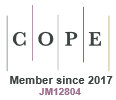RJ25017Triple La Niña 2020–2022 revival: river red gum and coolibah recruitment in the Queensland Murray–Darling Basin floodplain, Australia
Australian floodplain forests have struggled to regenerate after decades of drought. This study examined how the rare triple La Niña event (2020–2022) affected tree recruitment in Queensland’s Murray–Darling Basin. Successful tree establishment occurred at one-third of study sites, with young trees thriving in open areas with reduced competition. While flooding helps disperse seeds, sustained rainfall is crucial for seedling survival. These occasional but significant recruitment episodes may sufficiently maintain healthy forest populations over time.
RJ25017 Abstract | RJ25017 Full Text | RJ25017PDF (4.1 MB) | RJ25017Supplementary Material (383 KB) Open Access Article





